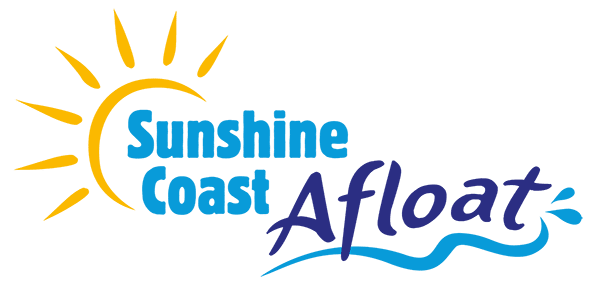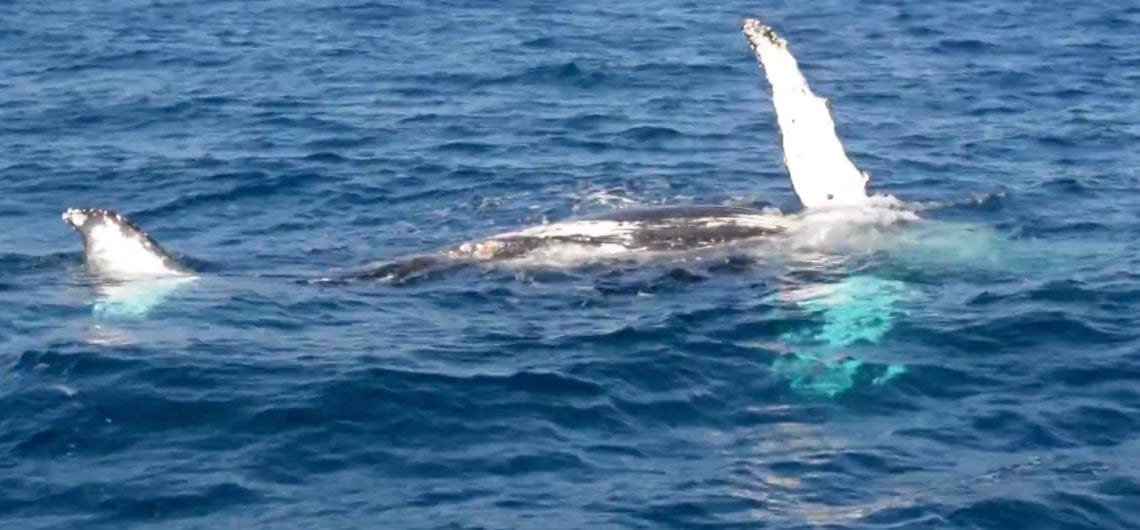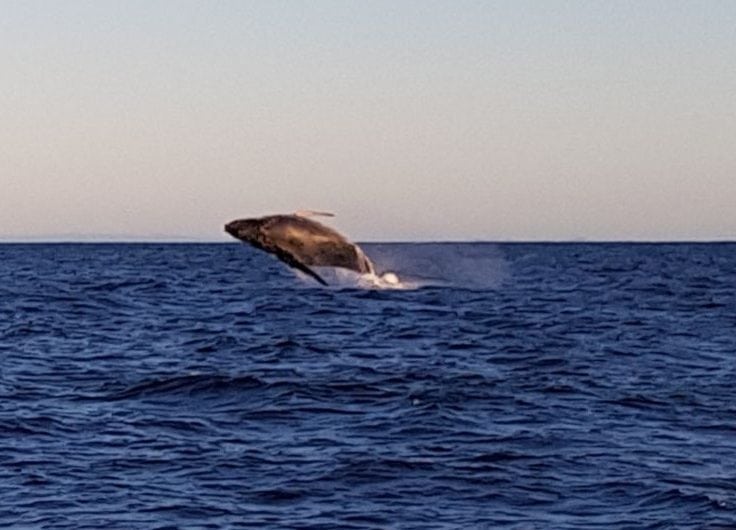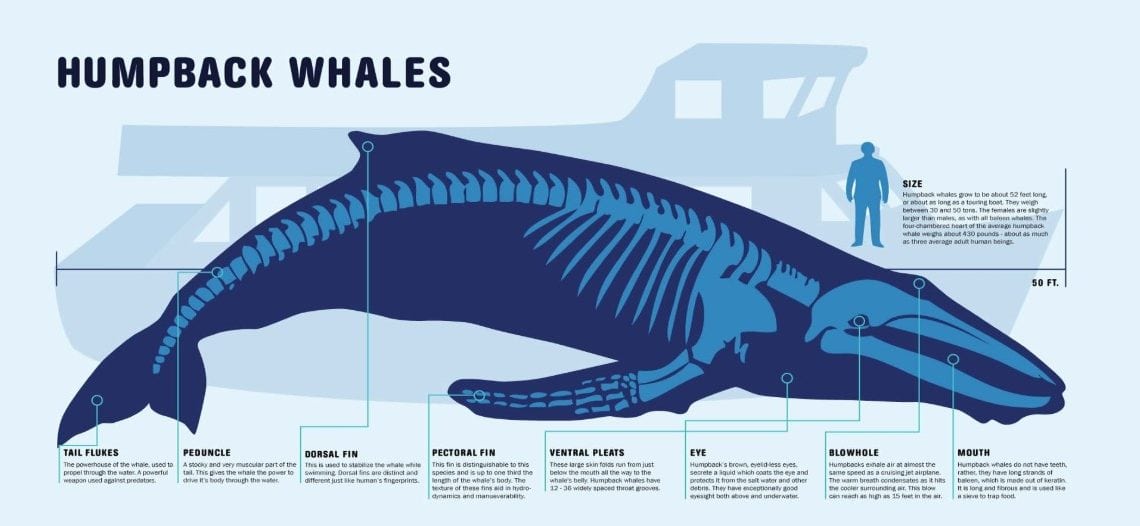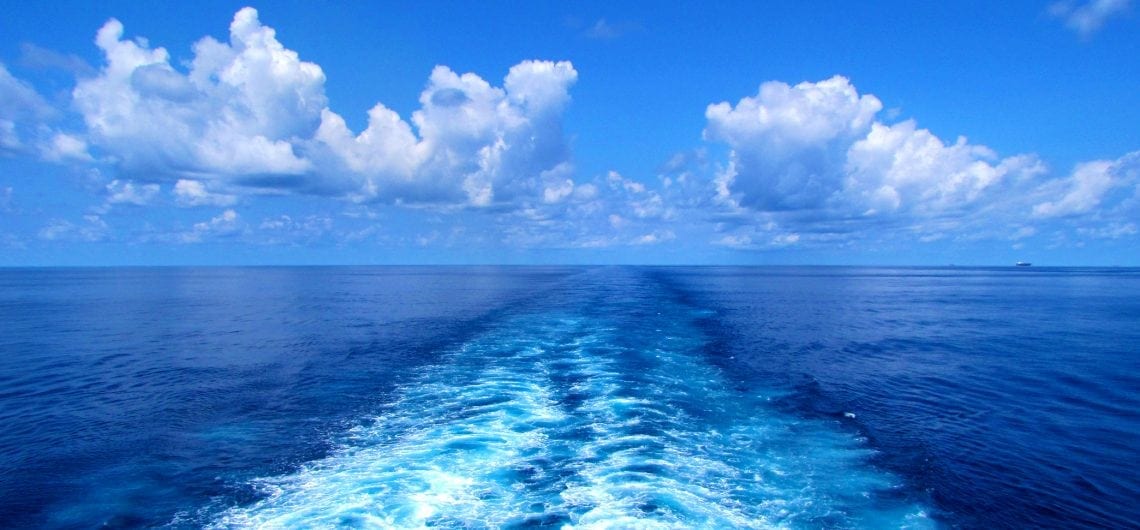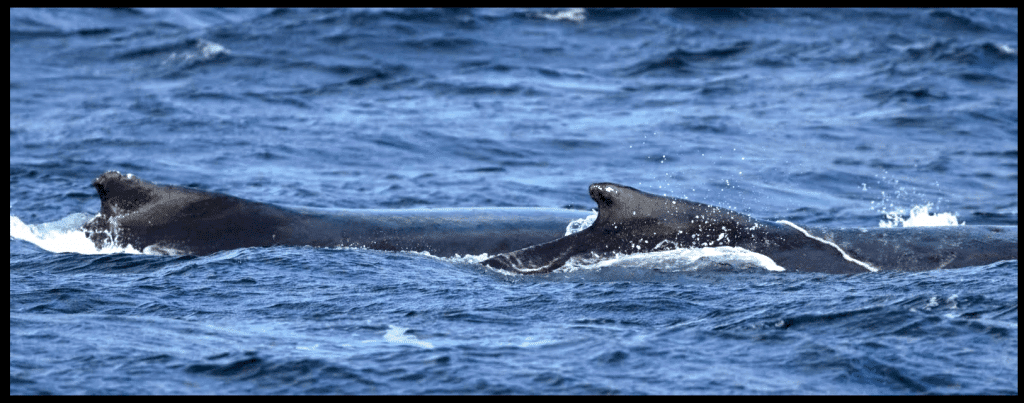The annual migration of the Humpback Whale is one of nature’s most amazing sights, and the Sunshine Coast is lucky to be a key destination on their route! Over the winter months, around 20,000 humpback whales undertake the 10,000km journey from the icey seas of Antarctica, to the warm tropical breeding grounds of sunny Queensland. The Sunshine Coast is quickly earning a reputation as one of Australia’s best whale watching destinations! WHALE WATCHING TOURS From late May, these giant visitors will begin to arrive in the Sunshine Coast’s waters, lured by the subtropical waters which make for a comfortable mating and birthing ground. Once the business is done, they’ll begin their journey back South from August to November, with their new babies in tow! The best time for whale watching is during their mating season from July through to late October. This is when visitors to the Sunshine Coast will spot these magnificent creatures singing, fighting and performing acrobatics to the delight of whale watchers. Whilst some of this can be seen from the shore, nothing quite compares to getting up close to these animals on the sea. Some tour operators commence whale watching trips as early as June, however Sunshine Coast Afloat prefers to wait a few weeks to ensure there are plenty of whales in our waters. This means you’ll spend less time whale seeking, and more time whale watching! SCHOOL HOLIDAYS We are fortunate that the 2018 Term Two and Term Three school holidays land during the Sunshine Coast’s peak whale watching season. If the promise of golden beaches and sunny skies wasn’t enough to lure you to this piece of paradise, a whale watching experience with Sunshine Coast Afloat is guaranteed to be a holiday highlight for the entire family! WHAT ABOUT THE WEATHER? The
The annual migration of the Humpback Whale is one of nature’s most amazing sights, and the Sunshine Coast is lucky to be a key destination on their route! Over the winter months, around 20,000 humpback whales undertake the 10,000km journey from the icey seas of Antarctica, to the warm tropical breeding grounds of sunny Queensland. The Sunshine Coast is quickly earning a reputation as one of Australia’s best whale watching destinations!
WHALE WATCHING TOURS
From late May, these giant visitors will begin to arrive in the Sunshine Coast’s waters, lured by the subtropical waters which make for a comfortable mating and birthing ground. Once the business is done, they’ll begin their journey back South from August to November, with their new babies in tow!
The best time for whale watching is during their mating season from July through to late October. This is when visitors to the Sunshine Coast will spot these magnificent creatures singing, fighting and performing acrobatics to the delight of whale watchers. Whilst some of this can be seen from the shore, nothing quite compares to getting up close to these animals on the sea.
Some tour operators commence whale watching trips as early as June, however Sunshine Coast Afloat prefers to wait a few weeks to ensure there are plenty of whales in our waters. This means you’ll spend less time whale seeking, and more time whale watching!
SCHOOL HOLIDAYS
We are fortunate that the 2018 Term Two and Term Three school holidays land during the Sunshine Coast’s peak whale watching season. If the promise of golden beaches and sunny skies wasn’t enough to lure you to this piece of paradise, a whale watching experience with Sunshine Coast Afloat is guaranteed to be a holiday highlight for the entire family!
WHAT ABOUT THE WEATHER?
The Sunshine Coast has well earned its name, however Mother Nature isn’t always kind and has been known to lash us with occasional wild weather. The safety of our passengers is paramount, so from time to time, rough seas, high winds and heavy rain may result in tour cancellations. But don’t worry, unlike humans, the whales aren’t scared off by the rough seas. They’ll still be there tomorrow when the ocean is calm, and the sun is shining!
With the humpback whale’s population increasing each year, and more babies being born in the Queensland’s waters, there been an easier or more exciting time to go whale watching on the Sunshine Coast. Let Sunshine Coast Afloat take you on the experience of a lifetime!
For more information about our trips – head over to our website – www.sunshinecoastafloat.com.au













